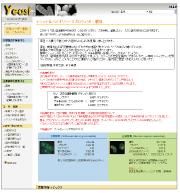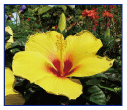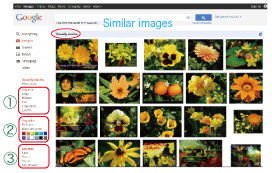|
 |
■ Bioresources information is available at the following URLs
|
 |
|
Introduction to Resource Center < No.37> Yeast Genetic Resource Center (YGRC) Supports Research in Yeast: The Ultimate Model Organism
Taro Nakamura (Professor, Graduate School of Science, Osaka City University)
Yoshinobu Kaneko (Assorciate Professor, Graduate School of Engineering, Osaka University)
|
1. Yeast : The ultimate model organism
|
|
Yeast has a long relationship with humans as one of the most practical microorganisms and an extremely useful model organism for research. Among the more than 1000 yeast species existing in nature, fission yeast (Schizosaccharomyces pombe) and budding yeast (Saccharomyces cerevisiae) (Fig. 1) are frequently used in life science research. A variety of convenient experimental methods, including recombinant DNA technology, has been developed for use of these yeasts in research. Many biological mechanisms, such as the cell cycle, intracellular protein transport, and autophagy, have been elucidated through research in yeast. Yeast was also among the earliest eukaryotes to have its genome completely sequenced. Full-fledged databases based on genome information are available, and various post-genome studies are being actively conducted on yeast. There are a large number of researchers studying yeasts, and many academic societies and study groups have been organized primarily by yeast researchers. In this respect, yeast can be considered the ultimate model organism in life sciences research. |
 |
Fig. 1: Differential interference images of fission yeast (left) and budding yeast (right) |
|
|
2 . Yeast Genetic Resource Center is acknowledged as a world-leading yeast resource center |
|
Despite the usefulness of yeast in research, institutions that provide yeast resources have not been fully developed. Along with the initiation of the National BioResource Project (NBRP), the Yeast Genetic Resource Center (YGRC) launched operations in 2002 with high expectations of the yeast research communities. Division of labor was achievedsuch that S. pombe and S. cerevisiae are maintained by Osaka City University and Osaka University, respectively. The scale of operations has been expanding year by year, and in the past few years, resources have been distributed in approximately 2000 cases per year. In 2010, approximately 60% of these resources were distributed overseas, to a total of 24 countries (Fig. 2). Fission yeast resources from YGRC are acknowledged as the best in the world, both in term of quality and quantity. YGRC's resources of budding yeast are also considered to be world class, and include many highly original resources developed by Japanese researchers. YGRC is thus globally recognized as a top yeast resource center. Here, we describe the recently acquired remarkable yeast resources. |
 |
Fig. 2: Destinations of yeast resources distributed from YGRC in the fiscal year 2010 |
|
|
3. YGRC maintains the source strain of S. pombe. |
|
Almost all the S. pombe laboratory strains used worldwide have been derived from a single strain, the Leupold strain, which was isolated by Dr. Urs Leupold, a geneticist at the University of Bern in Switzerland. The Leupold strain and other strains developed by Leupold that had been preserved at the University of Bern were deposited at YGRC in the fiscal year 2010. Possession of the source strain of S. pombe strains used worldwide signifies the status of YGRC as a world-class yeast resource center. We also preserve the source strains of other popular yeast strains and the strain S288C, which was used for the first genome-sequencing project.
|
|
4. Genome-wide resources of fission yeasts |
|
YGRC maintains a wide range of fission yeast resources but here we introduce genome-wide resources. The green fluorescent protein (GFP)-fusion protein library was deposited by the Hiraoka Laboratory at Osaka University. In this library, the GFP gene was fused with 1,000 out of approximately 5,000 open reading frames (ORFs) in the fission yeast genome to localize each protein (1). This collection can be used not only to localize proteins but also to screen proteins located in specific intracellular structures. This series of strains is one of the most popular fission yeast resources. In addition, insert fragments from approximately 60,000 clones in the fission yeast genome library (2) and those of about 22,000 clones in the full-length cDNA library were sequenced under the genome information consolidation program in fiscal years 2005 and 2006 in cooperation with the Kohara Laboratory at the National Institute of Genetics. Insert fragments from the genome library cover more than 95% of the whole genome of fission yeast. These draft sequences were registered in international databases. In addition, these clones were also registered in Genome Viewer (the genome database of NBRP Yeast) described later.
|
|
5. Popular or recommended resources for budding yeast |
|
The top 10 list of budding yeast resources distributed in the fiscal year 2010 was dominated by plasmids and strains of yeast harboring the auxin-inducible degron (AID) system (3), which was developed for researching gene functions by inducing the degradation of specific proteins in budding yeast using auxin, a plant hormone. Two hundred and fifty-seven clones were shipped domestically and internationally to 12 countries. These resources will hopefully facilitate interesting research results in a few years.
We also preserve genomic DNA clones of budding yeast, which were genome fragments of the S288C strain partially digested using Sau3AI and cloned into YEp51B plasmids (4). Currently, 363 clones have been released. These clones are also registered in the Genome Viewer (see section 6). We plan to slowly continue to increase the number of clones. Many types of cloned genes deposited by researchers are also available. Since these clones are found online on the Genome Viewer, please search to find your gene of interest. In July, we released the gTOW6000 resource (http://tenure5.vbl.okayama-u.ac.jp/~hmlab/gTOW6000/); it comprises approximately 5,800 clones of yeast strains harboring pTOWug2-836 plasmid vectors (YEp-type) linked with each PCR-amplified gene.
Table 1: List of top 10 budding yeast resources distributed in the fiscal year 2010.
| Rank |
NBRP Code
|
Strain or DNA |
# Times Distributed |
|
1
|
BYP6739
|
DNA
|
35
|
|
1
|
BYP6740
|
DNA
|
35
|
|
3
|
BYP6744
|
DNA
|
23
|
|
4
|
BYP6743
|
DNA
|
22
|
|
5
|
BYP6742
|
DNA
|
15
|
|
6
|
BY25598
|
Strain
|
14
|
|
7
|
BY25602
|
Strain
|
13
|
|
7
|
BYP6741
|
DNA
|
13
|
|
9
|
BY25594
|
Strain
|
11
|
|
10
|
BY25576
|
Strain
|
10
|
References
1. Hayashi, A et.al., Genes Cells, 14: 217-225 (2009)
2. Nakamura, T et al., Mol. Biol. Cell, 12: 3955-3972 (2001)
3. Nishimura, K., et al., Nat. Methods, 6: 917-922 (2009)
4. Akada, R. et al., Mol. Gen. Genet., 254: 267-274 (1997) |
|
6. Genome Viewer: Database for surveying the yeast genome by using Google Maps
|
Information on all the yeast strains and DNA resources provided by NBRP are available in Genome Viewer, powered by Google Maps (Fig. 3). In Genome Viewer, each gene in fission yeast and budding yeast has a link that connects to the GeneDB of the Wellcome Trust Sanger Institute in the UK and the Saccharomyces Genome Database (SGD) of Stanford University in the US, respectively; thus, gene information is easily available. On finding an interesting resource, the user can jump to the order page simply by clicking on the link and can request distribution by inputting the destination information. Payment is generally made by credit card, but other payment methods can also be selected. Thus, yeast resources can be ordered in a manner similar to online shopping. After an order is placed, the resources are usually delivered within a week. This ordering system was developed in cooperation with the NBRP Information Center.
|
 |
Fig. 3: Genome Viewer |
|
|
7. Pursuit of further enhancement of YGRC as a permanent resource center
|
The motto of the NBRP Yeast project is to establish "a resource center for researchers by researchers." Through YGRC, we continue to strengthen our close relationship with yeast research communities and aim to further develop the available resources.
|
Resources provided by YGRC
(Yeast Genetic Resource Center)
| 1) |
Strains for genetics research (ca. 20,000 strains) |
| 2) |
Plasmid DNA clones (ca. 4,500 clones) |
| 3) |
Vector plasmids for cloning |
| 4) |
DNA libraries (4 types) |
| 5) |
Genome library clones and full-length cDNA clone sets with sequenced insert fragments (ca. 62,000 clones in total) |
|

|
|
Google's Image Searching Service |

Have you ever thought that it would be useful to search for images similar to an image of your interest? Although this service was initiated last year on smartphones, searchable image targets were limited. However, this function has been available in Google Images since June 2011. Using this search engine, unlimited targets can be searched, and the function can be readily used on personal computers.
This useful service is introduced in this issue.

|
 Upload an image for searching Upload an image for searching
Open the image search page by clicking on "Images" (Fig. 1, ①) on the Google search page.
Next, click on the camera icon (Fig. 1, ②) on the right corner of the search box, and select "Upload an image" (Fig. 2) to upload an image that can be used for the search.
|

Fig. 2: Image uploading screen |

Image used for the search |
 Refining search results
Refining search results
Images similar to the uploaded images are displayed on the search result page on the basis of Google's independent algorithm. If no image interests you, click on "Visually similar images" to refine the targets of the image search.
|

Fig. 3: Refining image search results |

Fig. 4: Results of image search refinement |
On the image refinement page, select "Size" (Fig. 3, ①);"Color" (Fig. 3, ②); and "Type (face, photo, clip art, and line drawing)" (Fig. 3, ③) to refine your results. Since the color of the flower in this example is yellow, select yellow and refine the search results. Thus, only similar images will be selected (Fig. 4).
|
 |
In order to search images using both an image and keywords, first upload an image. When the thumbnail of your image appears inside the search box, you can input a keyword such as "Okinawa" and click the search button. By doing this, images matching both the source image and the keyword can be searched.
--------------------------------------
Guidelines for searching images
Users should avoid uploading any copyrighted images. Images are handled according to the log data of Google's privacy policy (http://www.google.com/intl/en/privacy/privacy-policy.html).
|
(Tohru Watanabe)
|
|